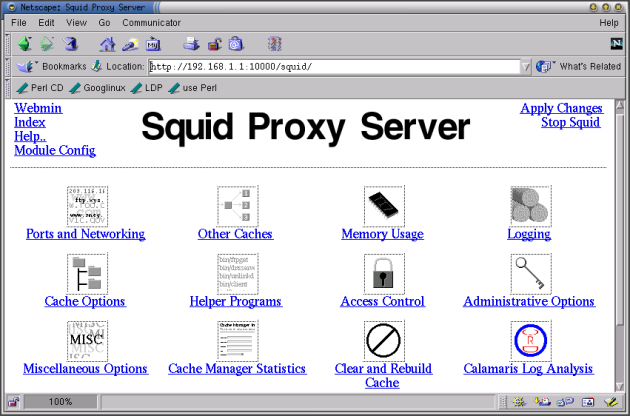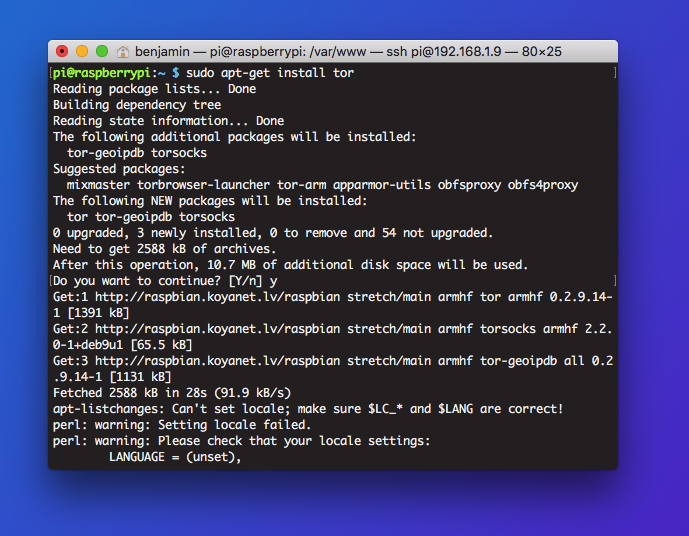Proxy Server Software Linux
Posted By admin On 01.06.20- Proxy is an IP filtering proxy server for Linux. It was written to solve the problem of being able to connect to machines behind a Linux firewall. There are both threaded and non-threaded versions of proxy in the download area.
- When talking about technology, 'Best' is typically not a thing. The concept of a 'Best' is subjective to your needs, and then 'Best' implies "What is right for me".
- Proxy Server Software Linux
- Proxy Server Software Reviews
- Best Proxy Server Software Linux
- Open Source Proxy Server Software Linux
| Developer(s) | Duane Wessels, Henrik Nordström, Amos Jeffries, Alex Rousskov, Francesco Chemolli, Robert Collins, Guido Serassio and volunteers[1] |
|---|---|
| Initial release | July 1996 |
| Stable release | |
| Repository | https://github.com/squid-cache/squid |
| Written in | C++ |
| Operating system | BSD, Linux, Unix, Windows[3] |
| Type | Proxy server |
| License | GNU GPLv2[4] |
| Website | www.squid-cache.org |
Squid is a caching and forwarding HTTP web proxy. It has a wide variety of uses, including speeding up a web server by caching repeated requests, caching web, DNS and other computer network lookups for a group of people sharing network resources, and aiding security by filtering traffic. Although primarily used for HTTP and FTP, Squid includes limited support for several other protocols including Internet Gopher, SSL,[6]TLS and HTTPS. Squid does not support the SOCKS protocol, unlike Privoxy, with which Squid can be used in order to provide SOCKS support.
Tibco bw. Dec 13, 2009 Tibco EMS valid license and credentials for download and learning How to download spotfire server from edeliverysite? Message accumulation on EventCollectorAuditService EMS queue. TIBCO Messaging Downloads. For more than 25 years, we’ve led the industry in high-performance messaging technology. Customers can now leverage the best of both commercial and open -source messaging technology, as a fully integrated solution, with a. TIBCO Enterprise Message Service™- Community Edition is available free of charge and is ideal for getting started with TIBCO Enterprise Message Service, developing prototypes and proof of concept implementations, going all the way up to small scale production deployments.
Squid was originally designed to run as a daemon on Unix-like systems. A Windows port was maintained up to version 2.7. New versions available on Windows use the Cygwin environment.[7] Squid is free software released under the GNU General Public License.
The level of sparking has increased more. All the attacks are sparking more than before overall the quality of the game has increased. The level 3D look has increased.What's the New in this Dragon Ball Z Game. 
How to Configure Proxy Settings in Linux Posted on April 25, 2013 by Justin Tung. Posted in Information Technology. Tagged Firefox, GNOME, Hypertext Transfer Protocol, KDE, Operating system, Proxy server, Proxying and Filtering, System Settings. 9 Comments. May 07, 2017 HAProxy – Load balancer and proxy server accelerator. HAProxy is an open source software based load Balancing, SSL offloading and performance optimization, compression, and general web routing software. HAProxy is used by some high-profile websites including GitHub, Reddit, and is used in the OpsWorks product from Amazon Web Services.
History[edit]
Squid was originally developed as the Harvest object cache,[8] part of the Harvest project at the University of Colorado Boulder.[9][10] Further work on the program was completed at the University of California, San Diego and funded via two grants from the National Science Foundation.[11] Duane Wessels forked the 'last pre-commercial version of Harvest' and renamed it to Squid to avoid confusion with the commercial fork called Cached 2.0, which became NetCache.[12][13] Squid version 1.0.0 was released in July 1996.[12]
Squid is now developed almost exclusively through volunteer efforts.
Basic functionality[edit]
After a Squid proxy server is installed, web browsers can be configured to use it as a proxy HTTP server, allowing Squid to retain copies of the documents returned, which, on repeated requests for the same documents, can reduce access time as well as bandwidth consumption. This is often useful for Internet service providers to increase speed to their customers, and LANs that share an Internet connection. Because the caching servers are controlled by the web service operator, caching proxies do not anonymize the user and should not be confused with anonymizing proxies.
A client program (e.g. browser) either has to specify explicitly the proxy server it wants to use (typical for ISP customers), or it could be using a proxy without any extra configuration: 'transparent caching', in which case all outgoing HTTP requests are intercepted by Squid and all responses are cached. The latter is typically a corporate set-up (all clients are on the same LAN) and often introduces the privacy concerns mentioned above.
Squid has some features that can help anonymize connections, such as disabling or changing specific header fields in a client's HTTP requests. Whether these are set, and what they are set to do, is up to the person who controls the computer running Squid. People requesting pages through a network which transparently uses Squid may not know whether this information is being logged.[14] Within UK organisations at least, users should be informed if computers or internet connections are being monitored.[15]

Reverse proxy[edit]
The above setup—caching the contents of an unlimited number of webservers for a limited number of clients—is the classical one. Another setup is 'reverse proxy' or 'webserver acceleration' (using http_port 80 accel vhost). In this mode, the cache serves an unlimited number of clients for a limited number of—or just one—web servers.
As an example, if slow.example.com is a 'real' web server, and www.example.com is the Squid cache server that 'accelerates' it, the first time any page is requested from www.example.com, the cache server would get the actual page from slow.example.com, but later requests would get the stored copy directly from the accelerator (for a configurable period, after which the stored copy would be discarded). The end result, without any action by the clients, is less traffic to the source server, meaning less CPU and memory usage, and less need for bandwidth. This does, however, mean that the source server cannot accurately report on its traffic numbers without additional configuration, as all requests would seem to have come from the reverse proxy. A way to adapt the reporting on the source server is to use the X-Forwarded-For HTTP header reported by the reverse proxy, to get the real client's IP address.
It is possible for a single Squid server to serve both as a normal and a reverse proxy simultaneously. For example, a business might host its own website on a web server, with a Squid server acting as a reverse proxy between clients (customers accessing the website from outside the business) and the web server. The same Squid server could act as a classical web cache, caching HTTP requests from clients within the business (i.e., employees accessing the internet from their workstations), so accelerating web access and reducing bandwidth demands.

Media-range limitations[edit]
Proxy Server Software Linux
For example, a feature of the HTTP protocol is to limit a request to the range of data in the resource being referenced. This feature is used extensively by video streaming websites such as YouTube, so that if a user clicks to the middle of the video progress bar, the server can begin to send data from the middle of the file, rather than sending the entire file from the beginning and the user waiting for the preceding data to finish loading.
Proxy Server Software Reviews
Partial downloads are also extensively used by Microsoft Windows Update so that extremely large update packages can download in the background and pause halfway through the download, if the user turns off their computer or disconnects from the Internet.
The Metalink download format enables clients to do segmented downloads by issuing partial requests and spreading these over a number of mirrors.
Squid can relay partial requests to the origin web server. In order for a partial request to be satisfied at a fast speed from cache, Squid requires a full copy of the same object to already exist in its storage.
If a proxy video user is watching a video stream and browses to a different page before the video completely downloads, Squid cannot keep the partial download for reuse and simply discards the data. Special configuration is required to force such downloads to continue and be cached.[16]
Supported operating systems[edit]
Squid can run on the following operating systems:
- OS/2 and eComStation[17]
- Windows[18]
See also[edit]
- Web accelerator which discusses host-based HTTP acceleration
- Proxy server which discusses client-side proxies
- Reverse proxy which discusses origin-side proxies
References[edit]
- ^'Who looks after the Squid project?'.
- ^'Squid version 4'. Retrieved 3 July 2019.
- ^'What is the Best OS for Squid?'.
- ^'Squid License'.
- ^'Squid Project Logo'. Retrieved 6 July 2014.
- ^'Squid FAQ: About Squid'. Retrieved 13 February 2007.
- ^'Squid 3.5 for Windows'. February 2019.
Current build is based on Squid 3.5.1 build for Cygwin Windows 64 bit
- ^C.Mic Bowman, Peter B. Danzig, Darren R. Hardy, Udi Manper, Michael F. Schwartz, The Harvest information discovery and access system, Computer Networks and ISDN Systems, Volume 28, Issues 1–2, December 1995, Pages 119-125. doi:10.1016/0169-7552(95)00098-5
- ^Squid intro, on the Squid website
- ^Harvest cache now available as an 'httpd accelerator', by Mike Schwartz on the http-wg mailing list, Tue, 4 April 1995, as forwarded by Brian Behlendorf to the Apache HTTP Server developers' mailing list
- ^'Squid Sponsors'. Archived from the original on 11 May 2007. Retrieved 13 February 2007.
The NSF was the primary funding source for Squid development from 1996-2000. Two grants (#NCR-9616602, #NCR-9521745) received through the Advanced Networking Infrastructure and Research (ANIR) Division were administered by the University of California San Diego
- ^ abDuane Wessels Squid and ICP: Past, Present, and Future, Proceedings of the Australian Unix Users Group. September 1997, Brisbane, Australia
- ^'netcache.com'. Archived from the original on 12 November 1996. Retrieved 7 August 2012.
- ^See the documentation for header_access and header_replace for further details.
- ^See, for example, Computer Monitoring In The Workplace and Your Privacy
- ^'Squid Configuration Reference'. Retrieved 26 November 2012.
- ^OS/2 Ports by Paul Smedley, OS/2 Ports
- ^https://wiki.squid-cache.org/KnowledgeBase/Windows
Further reading[edit]
- Wessels, Duane (2004). Squid: The Definitive Guide. O'Reilly Media. ISBN978-0-596-00162-9.
- Saini, Kulbir (2011). Squid Proxy Server 3.1: Beginner's Guide. Packt Publishing. ISBN978-1-849-51390-6.
Best Proxy Server Software Linux
External links[edit]
- Official website
- Squid reverse proxy — Create a reverse proxy with Squid
- Configuration Manual — ViSolve Squid Configuration Manual Guide
- Configuration Manual — Authoritative Squid Configuration Options
- 'Solaris Setup'. Archived from the original on 15 January 2008. — Setup squid on solaris